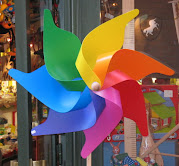
At lunchtime today I got back from the DEFAP Forum which has been taking place in Rouen over the weekend. It was a splendid, fun and well organised event with a great ambiance and took place in Rouen's Halle aux Toiles which is a great venue. Several of my FPF colleagues were also there including Marianne Guéroult of the Mosaic project, she had a great stand with loads of activity and interest in the different projects that the migration churches are involved in. Apart from going round and drinking up the great music, atmosphere and exhibitions I met up with lots of people and had useful discussions with lots of folk about ecumenism and much more besides.
Officially though I was there to lead two sessions at the afternoon workshops "Un printemps oecuménique est-il possible et avec quel language aujourd'hui?" It was great to do two busy sessions with motivated and very talkative people. Of course our time was limited so it was important to try and give everyone the possibility to say something simple about the theme without full scale discussion. So I spent time on the train to Rouen cutting out flower petals ... twas ever thus with the crazy Stranz woman. Everyone in the groups received 4 or 5 petals and then after some introduction from me on the theme I encouraged people to write words on their petals in response to my saying the word "springtime". We got a wonderful series of words and phrases in response - I'll copy them up tomorrow (oh no do I sense procrastination ...). Everyone of course got to say their words and phrases about springtime out loud. Those petals were gathered up while the second word was given to the group, that word was of course "ecumenism" - I do wonder if I had given the words in reverse order whether the results would have been diffierent ... generally there were very positive responses to the ecumenism question - that surprised me. I think the two that really struck me were "le projet originel" and "river with many tributaries which has problems finding its estuary".
Discussion was so intense that we didn't have time for the final phase which was to make flowers out of our ecumenical sprintime petals so I have done that this afternoon on the wonderful parquet floor of my Paris appartment. they look better than I thought they would and I think they're quite fun. A bit of artwork for the ecumenism of the people I've been talking about on and off in my new job. the theme of the even also helped to frame ecumenism in terms not only of the "other" who is the world "chez moi" but also to think of ourselves as the world "chez les autres". Being a Protestant in France is still quite exotic for lots of people.
It was important to be at this mission event which only takes place once every four years and it helped encourage me to think about the work of the FPF in terms of missional theology.
Anyway the other great thing about these ecumenical sunflowers is that at the opening worship everyone received a packet of sunflower seeds. I suspect those will not have quite such variegated petals as these paper ones.







